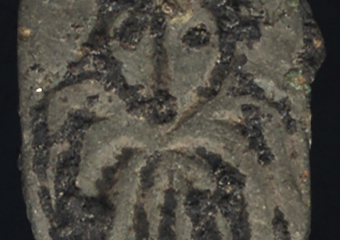Bones of bison, camel and turu were discovered during the excavations at Rusokastro Castle in 2019
 Camels strolled between the walls of the Rusokastro fortress during the Middle Ages. This is clear from the prepared report on the animal bones discovered during the excavations in 2019. The author of the study is Burgas zoologist Dr. Georgi Ribarov.
Camels strolled between the walls of the Rusokastro fortress during the Middle Ages. This is clear from the prepared report on the animal bones discovered during the excavations in 2019. The author of the study is Burgas zoologist Dr. Georgi Ribarov.
In addition to the bones from tur, or wild cattle, which were discovered in 2017, the remains of a European bison, also known as European bison, were found this summer. It reaches a weight of more than 1 tonne and a length of more than 3 m.
Particularly important are the remains of a camel found, probably in the back. So far from the Middle Ages, only the remains of the Tuida fortress near the present-day town of Sliven are known from Bulgaria. From the Roman and Late Antiquity, camel bones were found only in Kabile, near the present day Yambol, and Nikopolis ad Istrum, up to the present day Veliko Tarnovo. According to Dr. Ribarov, the open camel bone in Rusokastro shows the importance of the medieval city as a trading center, since in the Middle Ages camels were used only for caravan trade and, more rarely, for traveling circuses.
Wild mammals have discovered red deer, fallow deer, jackal, fox, wild goat, wolf, wild boar, wild rabbit. Remains of the wild goat are important - a species that inhabits the high parts of the mountains and is particularly difficult to hunt.
Wild birds have discovered bones of colchid pheasant, partridge, keclik, large droplet, gray crane, swan, black-footed diver, duck bats, rock pigeon, great white heron, common mussel. The hawk bones probably have to be associated with raising them as animals that the nobles hunted.
Domestic mammals are represented by domestic pig, sheep, goat, horse, donkey, cutter, mule, dog, cat, cattle, buffalo. Most are bones from domestic pigs, followed by those from sheep and goats. Poultry are represented by hen, duck, goose. Chicken bones dominate, and sensitively.
Of particular interest are the remains of aquatic inhabitants. Among the marine species are sturgeon and palamud, the latter reaching 2.5-3 kg. In addition, shells of peacock, green sea crab and four species of sea shells were found.
Freshwater inhabitants have documented caracuda, carp, catfish, whitefish, freshwater mussels. Remains of two types of terrestrial tortoises have been found and consumed baked with the shells.
The analysis of the results of the study made a great contribution to the restoration of the natural environment in which medieval people lived. It is strong to note that in 2019, 32.2% of open bones are from wild animals - that is, one third of the castle's meat diet is from game.
The excavations of Rusokastro Castle are carried out by the Regional Museum of History - Burgas and are funded by the Municipality of Kameno and the Ministry of Culture of the Republic of Bulgaria.


Comments
comments powered by Disqus